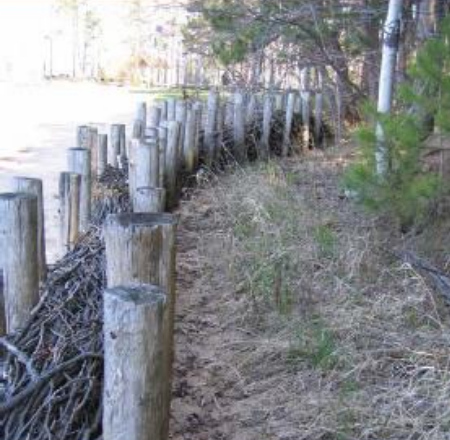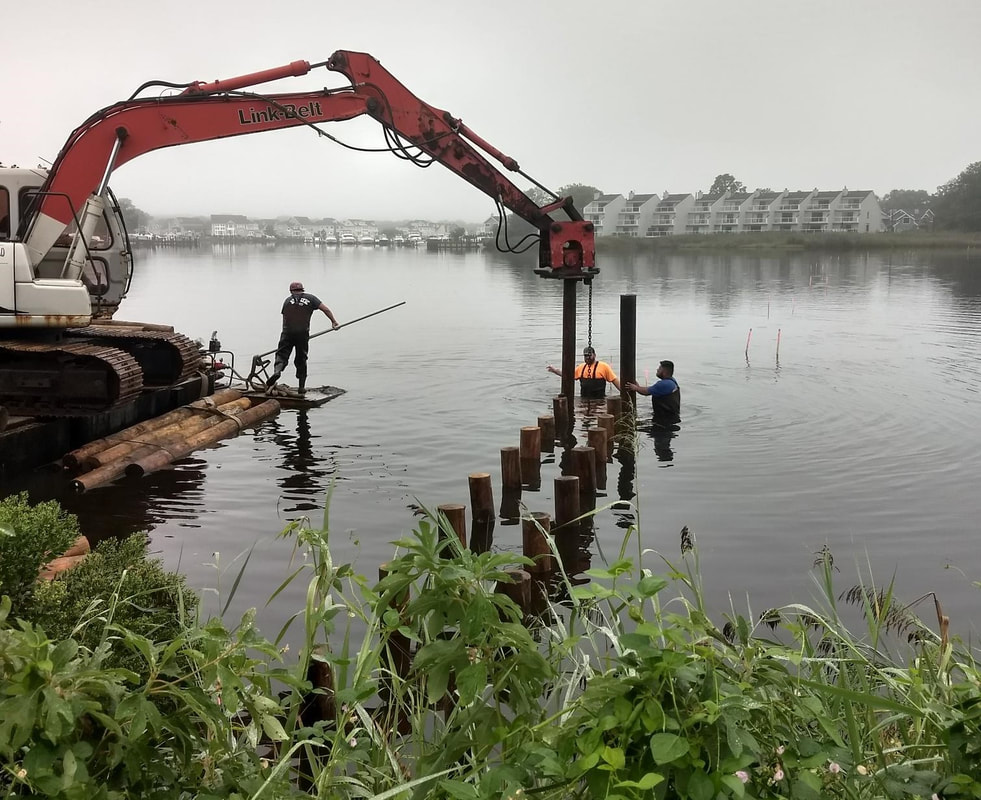|
Work is underway on the permanent living shoreline at the Slade Dale Nature Sanctuary in Point Pleasant, NJ. Phase one of the living shoreline project began with American Littoral Society contractor, Atlantic Dock and Bulkhead, installing wooden pilings that will serve as the foundation for the structure designed to eliminate erosion and restore lost land. "We're excited to be taking the next step in our work in this area," said Capt. Al Modjeski, Habitat Restoration Director for the Littoral Society. "This is a great opportunity to show how living shorelines can provide a low-cost, natural solution to a long-term problem."  Example of a branchbox breakwater Example of a branchbox breakwater Slade Dale Sanctuary is a 13-acre preserve located along Beaverdam Creek on the south side of Point Pleasant. Historic aerial imagery shows the shoreline has eroded about 300 feet since 1930. Plant life also shows evidence of marsh retreat. To halt erosion and restore marsh habitat at the site, a series of pilings will be installed that will hold a branchbox breakwater and Christmas tree vanes. These structures will allow water to flow in, but reduce the force of moving water while capturing sediment. Native marsh vegetation will also be planted. A branchbox breakwater involves bundles of tree branches placed between pilings that keep them in place. Christmas tree vanes do a similar job using recycled holiday trees. Living shorelines are an alternative to hardened shoreline structures such a bulkheads and seawalls. Unlike hard structures, which impede the growth of plants and animals, living shorelines grow over time. "The sanctuary has been losing ground for years," said Zack Royle, American Littoral Society Habitat Restoration Technician. "What our work will do is not only stop the loss, but help nature build it back into something that is both protective and beautiful." Sometimes referred to as nature-based, green, or soft shorelines, living shorelines use natural materials such as plants, sand or rock to stabilize the shoreline, reduce erosion, and provide valuable habitat. They also tend to be far less expensive to construct and maintain that hard structures. Initial construction at Slade Dale should be completed within a few days. A campaign to collect Christmas trees will be held over the winter. Volunteer events will be scheduled in the spring to fill the branchboxes and tree vanes. The Littoral Society is also conducting biological monitoring around the site to help determine how the living shoreline affects animal life. This project is funded and supported by Point Pleasant, the Nature Conservancy, the New Jersey Corporate Wetlands Restoration Partnership, and the Point Pleasant Rotary Club. Comments are closed.
|
Archives
July 2024
Categories
All
|


